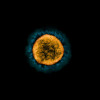Everything You Need to Know About Monkeypox

Over 17,000 confirmed cases of monkeypox have been reported worldwide since April 2022, the majority in Europe and North America, where the disease hasn’t traditionally had a foothold. This makes the current outbreak by far the largest to take place in areas where the disease isn’t endemic, and the spread is still ongoing.
Because of this, the World Health Organization (WHO) has declared the outbreak a Public Health Emergency of International Concern. This is the WHO’s highest state of alarm, and signals that the disease poses a serious threat, has the potential to spread to countries that aren’t yet affected, and needs international coordination in order to be controlled.
But while cases have been rising and symptoms can be painful, the risk of monkeypox to the general population is low. If you think you have the virus—or have come into contact with someone with it—stay calm. You probably won’t need any treatment, but you should do what you can to avoid spreading the virus further. Monkeypox infections occur in two distinct stages. Initially people develop flu-like symptoms such as exhaustion, fever, body aches, chills, and headache as the virus enters their cells, followed by enlarged lymph nodes as their immune system gears up to fight off the infection.









































































